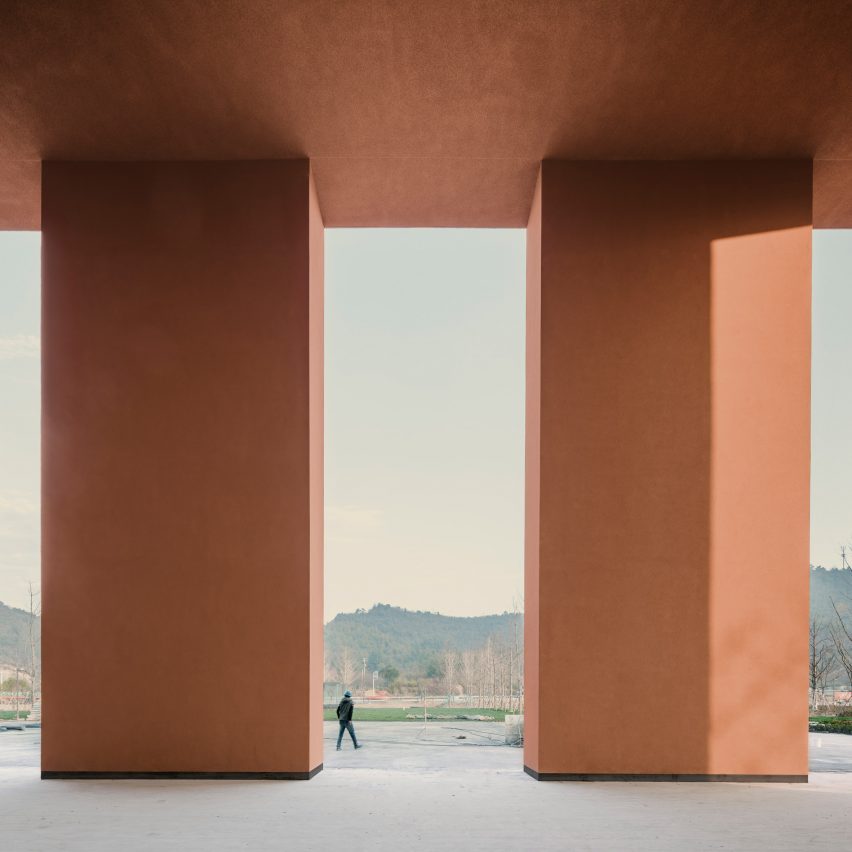David Chipperfield embeds red natural history museum into sloping earth

David Chipperfield's Zhejiang Museum of Natural History in China is a cluster of monolithic exhibition halls arranged around a garden on a sloping site.
The British architect's Shanghai-based studio designed the museum as the centrepiece of a new cultural district in the county of Anji.
Pavilions are rendered in red ochre to match the clay earth of the hillside. They are topped with green roofs to complement the surrounding nature when viewed from above.
At the northernmost point of the site, an enormous loggia intended to recall medieval cloisters welcomes visitors to an entrance pavilion, which looks out towards the exhibition halls and the landscape beyond.
The building consists of eight single-storey pavilions, which are partially embedded in the sloping earth. The large, monolithic volumes contain public areas and exhibition spaces positioned around the central garden. "The large visitor numbers expected, combined with the scale of some of the exhibits, gave rise to a loose infrastructure of generous circulation and spacious exhibition halls," explained the studio.
"Set at right angles to the slope and staggered horizontally, the pavilions follow the natural topography," the studio added, "negotiating a 12-metre difference in height from north to south, and minimising the impact on the landscape."
The loggia continues around the perimeter of the central garden, providing continuous circulation connecting the other pavilions. Visitors c...
| -------------------------------- |
| The Small House by Bonaventura Visconti di Modrone |
|
|
Villa M by Pierattelli Architetture Modernizes 1950s Florence Estate
31-10-2024 07:22 - (
Architecture )
Kent Avenue Penthouse Merges Industrial and Minimalist Styles
31-10-2024 07:22 - (
Architecture )






